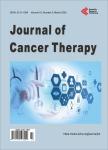On the Association between Travel Distance and Treatment Choice for Low-Risk Prostate Cancer: Results from a Rural State
On the Association between Travel Distance and Treatment Choice for Low-Risk Prostate Cancer: Results from a Rural State作者机构:The University of North Dakota School of Medicine and Health Sciences Grand Forks ND USA Bismarck Cancer Center Bismarck ND USA
出 版 物:《Journal of Cancer Therapy》 (癌症治疗(英文))
年 卷 期:2016年第7卷第9期
页 面:656-664页
学科分类:1002[医学-临床医学] 100214[医学-肿瘤学] 10[医学]
主 题:Low-Risk Prostate Cancer Rural Brachytherapy Prostatectomy Young Men Travel Distance
摘 要:Background: Evidence suggests that cancer patients with increased travel burden to treatment centers may have limited treatment options. Purpose: To investigate the association between travel distance to a treatment facility and initial treatment choice among young men with low-risk prostate cancer in a rural state. Methods: A retrospective medical charts review was conducted of young men (65 years or younger) newly diagnosed with low-risk prostate cancer from January 1, 2005 through December 31, 2014 who were treated with either active surveillance, radical prostatectomy, or brachytherapy at either of the two major hospital systems in Bismarck, ND, USA. Results: Information on a random sample of 242 patients was studied. The majority of patients (66%) received radical prostatectomy. Patients who received radical prostatectomy were significantly younger (p-value 0.001). PSA at diagnosis, clinical stage, and Gleason score were not associated with treatment choice (p-value = 0.06;p-value = 0.1794;and p-value = 1.00;respectively). Adjusting for age at diagnosis, PSA at diagnosis, and treatment facility, treatment choice was not associated with travel distance (p-value = 0.309). Patients treated at St. Alexius facility were more likely to undergo radical prostatectomy than Sanford health patients (p-value Conclusions: We found no association between travel distance and treatment choice for low-risk prostate cancer. Treatment choice was associated with institution which may suggest institutional bias in patterns of care.



